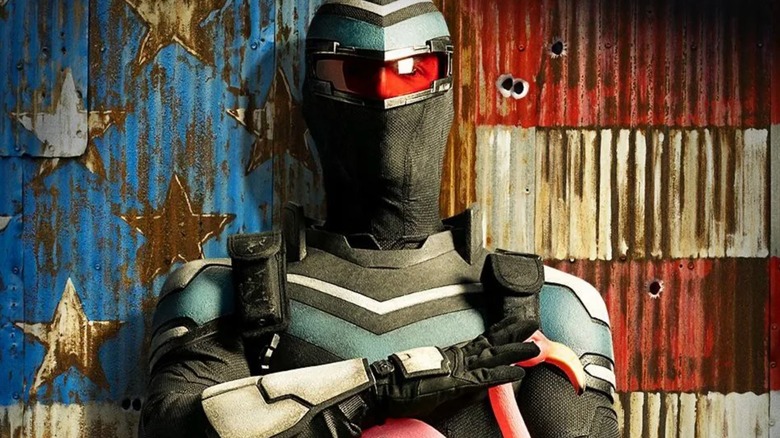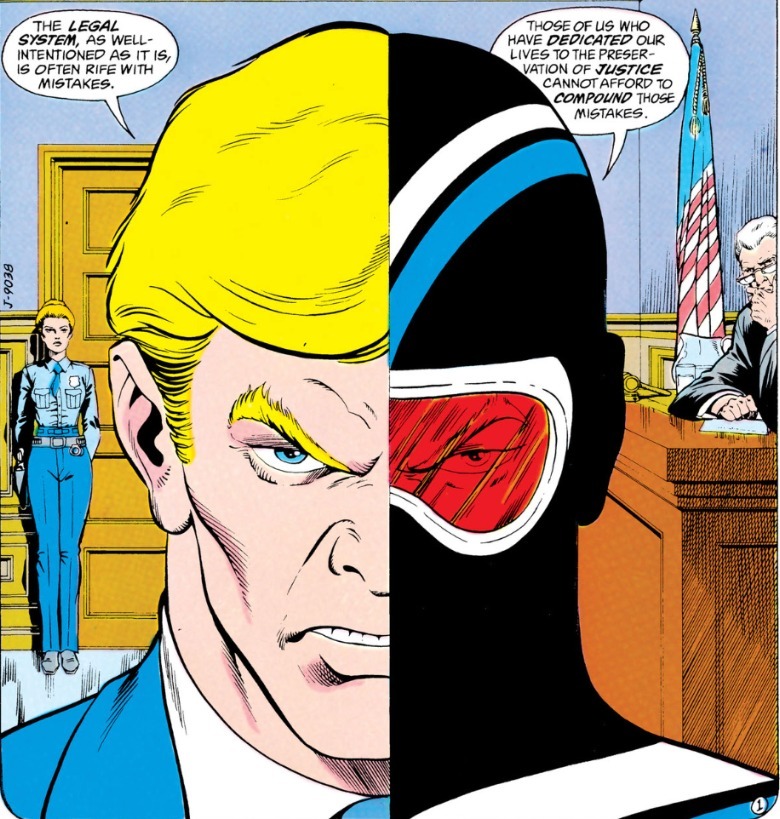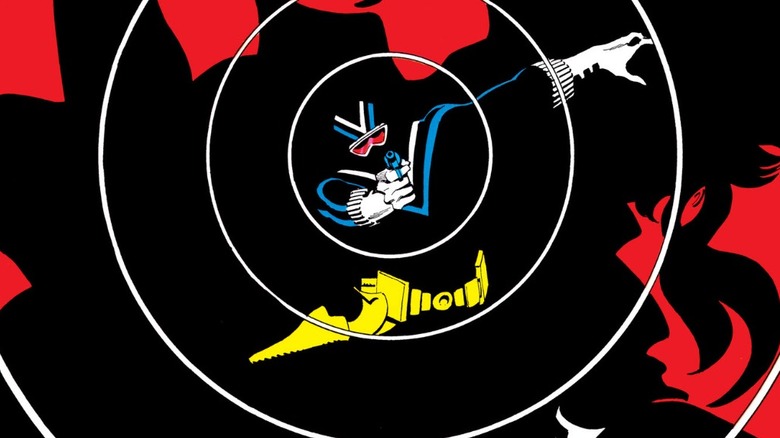Why Peacemaker's Vigilante Is Nothing Like The DC Comics Character
We may receive a commission on purchases made from links.
Busboy by day, bloodthirsty costumed adventurer by night, and always smiling despite having zero empathy, Adrian Chase/Vigilante (Freddie Stroma) is at home in the black comedy of HBO Max's "Peacemaker." But while Vigilante's costume is right out of the comics, the character inside that costume couldn't be more different.
Writer Marv Wolfman and artist George Pérez created Adrian Chase during their run on "The New Teen Titans." He was a New York City district attorney, frustrated by a justice system full of loopholes, who gradually came to appreciate Robin and his Titan teammates. After "The New Teen Titans" #34, in which mobsters bomb Chase's apartment and kill his wife and children, he becomes the Vigilante.
This Vigilante is a stern and tragic character; less Deadpool, more "Death Wish." Marvel Comics has its own "Death Wish"-inspired superhero, Frank Castle/The Punisher, but aside from his backstory, Vigilante is really closer to Punisher's rival Daredevil. Like Matt Murdock, Adrian Chase is a lawyer who dispenses justice with his own hands. Whereas the Punisher is a fanatic who murders criminals, Vigilante tries to keep things nonlethal and often questions if his crusade is truly the most just path, comparable to how Daredevil wallows in Catholic guilt.
Wolfman had previously written "Daredevil," and his foreword for "Vigilante by Marv Wolfman" volume 1 revealed that his experience navigating Daredevil's guilt is what inspired "Vigilante." In "Daredevil" #127, a fight between Daredevil and superhero Torpedo destroys a Black family's house."The two heroes looked at (or in DD's case, sensed) the damage around them and realized that their thoughtless aggression had real world consequences," Wolfman wrote. "Vigilante" was his attempt to write a whole book around the thesis of that issue.
Vigilante is a Death Wish-inspired antihero
"Vigilante" was written primarily by Wolfman for the first 21 issues, and then by Paul Kupperberg for the remaining 29 issues. Unlike most superhero comics, it has a definitive ending, and collectively, the series could be retitled "The Tragedy of Adrian Chase."
The comic was darker and more serialized than contemporary DC series. The supporting cast, including Vigilante's crime-fighting helpers, often died with no resurrection waiting for them. The series was frank about taboo subjects like violent crime and sexuality. Future "Watchmen" writer Alan Moore guest-wrote a two-issue story in "Vigilante" #17-18, "Father's Day," about Vigilante trying to rescue a young girl from her sexually abusive father.
It often felt like "Vigilante" could take place in the real world, and not just because it was set in NYC and not Metropolis or Gotham City. "Often" because there was some typical superhero goofiness (e.g. cyborg villain the Controller), but that faded as the book went on.
When Chase debuted in "The New Teen Titans Annual" #2, he was set up as a lethal alternative to the Titans. The opening page of "Vigilante" #1 shows him posing with a sniper rifle. Yet the series quickly pulled back from this to make Chase a more tormented character. In only the second issue of the series, Vigilante doubts himself after he viciously beats a man who turns out to be innocent. Chase then briefly becomes a defense attorney at his wealthy father's firm, only to quickly remember why the corrupt justice system appalled him to begin with. One of the recurring villains in "Vigilante" was the Electrocutioner, a foil for Vigilante who executes criminals. Electrocutioner sees the world in black and white, and demands Vigilante do so as well.
Why James Gunn changed Vigilante so much
In "Vigilante" #14, a woman attempts to kill men who'd previously raped her and were exonerated. Vigilante saves her from being assaulted again, then she grabs a gun and kills the men. Vigilante lets her go, and his protests that he could have arrested the men instead seem naive since they'd already been tried and freed. Does that make the woman's vigilante justice the right thing?
The comic is smart enough to understand that these questions don't have universal answers. It also recognizes that while Chase's reason for becoming Vigilante may have been sympathetic and noble to some, it was a fool's errand. Chase's life and sanity slowly falls apart until he abandons his principles. Then, in issue #50, he dies by suicide; the very last panel of the series is his gravestone.
Stroma's obtuse and sadistic Vigilante would miss the comic's message about how violence is self-destructive. There's a good reason that Gunn included Vigilante in a "Peacemaker" series: Peacemaker appeared in several issues of "Vigilante" and Kupperberg later wrote the "Peacemaker" mini-series in 1988. Why did Gunn change Vigilante's personality, though? Based on comments to Polygon in 2022, Gunn concluded that for someone to become Vigilante, they could never have been normal to begin with.
Cutting Adrian's career as a lawyer maps onto his new characterization. There's no way this guy could attain or manage a career like that. Gunn has acknowledged his Vigilante's debt to Wolfman, Pérez, et. al, but if you read those comics expecting the goofy Vigilante from "Peacemaker," you're in for a shock.
If you or anyone you know has been a victim of sexual assault, help is available. Visit the Rape, Abuse & Incest National Network website or contact RAINN's National Helpline at 1-800-656-HOPE (4673).
If you or someone you know is struggling or in crisis, help is available. Call or text 988 or chat 988lifeline.org



